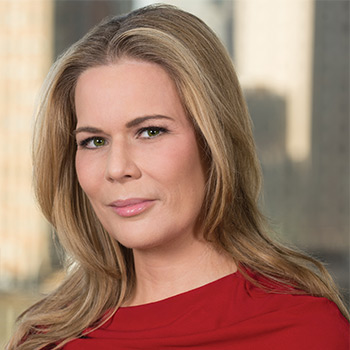Shareholder yield measures how much a company gives back to shareholders, explains Richard Moroney, editor of Dow Theory Forecasts, a blue-chip oriented advisory service that has been published since 1946.
To compute shareholder yield, we look at the combined total spent on dividends and stock repurchase over the last 12 months, then divide that total by current stock market value. For the 12 months ended September, the most recent period for which we have data, the S&P 500 Index’s shareholder yield is 3.4%, below the four-year norm of 4.4%.
Don’t blame that low yield on a lack of generosity from index components. Spending on both dividends and buybacks has risen from four years ago. In the September quarter, index companies spent $130 billion on dividends, up 23% from the same period four years ago, and $235 billion on buybacks, up 82%. However, dur- ing that four-year period the index’s stock-market value rose nearly 70%.
Rather than focus on the market’s shareholder yield, we prefer to zero in on the components companies can control — dividends and buybacks. For this analysis, we sought companies that met three criteria:
1) Shareholder yield. Only firms with a shareholder yield of 3% or higher made the cut.
2) Dividend growth. We required 8% annualized growth over the last five years.
3) Shrinking share count. Many companies repurchase shares, but not enough to offset share issuance via stock options. We limited our screen to stocks that reduced their share count by an annual rate of at least 1% over the last five years.
This screen wasn’t supposed to be a technology story. But once we started digging into shareholder yield, the sector became difficult to ignore. Twenty-one of our A-rated stocks made the cut, including five from our Buy List — all tech names.
While tech stocks aren’t known for their dividend yields, the sector’s concentration makes sense. Tech stocks have set the pace on buybacks for years, and these days many of the larger companies also pay massive dividends. Below, we profile three tech stocks with a history of sharing the wealth:
Apple (AAPL) repurchased $87 billion of its own shares over the last year and $356 billion over the last five years, tops among S&P 500 companies in both metrics. The closest rival is Meta Platforms (FB), which invested $50 billion in its own shares last year, though Apple’s five-year total is more than four times Meta’s $88 billion.
Apple’s $14.6 billion in dividends paid in the 12 months ended December ranks fourth in the S&P 500. Over the last five years, Apple boosted its dividend at an annualized rate of 9% while reducing its share count by 4.8 billion, or 5% annualized. The stock yields 0.5%, a victim of its own success, as the shares have returned an annualized 38% over the last five years, outstripping dividend growth.
How does Apple do it? Credit $112 billion in operating cash flow over the last four quarters, the kind of cash that leaves plenty to share with investors. During that 12-month period, Apple generated $87 billion in free cash flow, the same amount it spent on repurchases.
Given Apple’s prodigious cash generation and history of largesse with that cash, we expect dividend growth and buybacks to continue in coming years. Apple, with a shareholder yield of 4.0%, is a Focus List Buy and a Long-Term Buy.
HP (HPQ) has a shareholder yield of 19.5% which is tops among our recommended stocks, powered mostly by aggressive stock buybacks. In the last five years, HP spent nearly $17 billion on its own stock, reducing the share count by an annualized 8.7%, also the highest among our recommendations.
In the year ended January, HP managed free cash flow (operating cash flow minus dividends and capital spending) of $5.4 billion, up 87% from three years ago. That gain reflects robust profit growth powered by positive demand trends for personal computers and printers, as well as by profit-margin expansion. Operating profit margins topped 10% in the year ended January, up from 8.3% three years earlier.
Since HP declared January-quarter sales and earnings that topped the consensus by 3% and 8%, respectively, analysts’ revenue and profit targets have risen. The consensus now calls for sales growth of 4% and per-share-earnings growth of 13% in fiscal 2022 ending October. Analysts expect the growth to erode in future years, calling for modest sales declines and profit growth of 4% or lower in 2023 and 2024.
These targets seem overly conservative, even if we assume some normalization in PC demand. At eight times the 2022 consensus, HP trades at a 22% discount to its industry. HP, already rated as a Long-Term Buy, is being added to our Focus List of top recommendations.
NetApp (NTAP) yields 2.5%, among the higher yields on our recommended lists and second only to HP among technology stocks. The company held its quarterly dividend steady from mid-2019 through mid-2021 before declaring a 4% increase in July.
Despite that pandemic-driven conservatism, NetApp’s dividend has increased at annualized rate of 11% over the last five years. With the current indicated dividend accounting for less than 40% of expected earnings, NetApp has the capacity to boost the payout, and history suggests a willingness as well. Each of NetApp’s last seven dividend hikes have been announced in July.
Analysts expect profit growth of 9% in the April quarter, followed by 7% in fiscal 2023 ending April and 13% in fiscal 2024. Demand for cloud-computing solutions remains robust, and NetApp seems well positioned to benefit from both expansion of public cloud infrastructure and an increase in the number of companies requiring regular updates and upkeep for their networks.
Revenue from software and recurring maintenance rose 14% in the January quarter, and a 4% increase in deferred revenue bodes well for future recurring revenue. NetApp is a Focus List Buy.


















